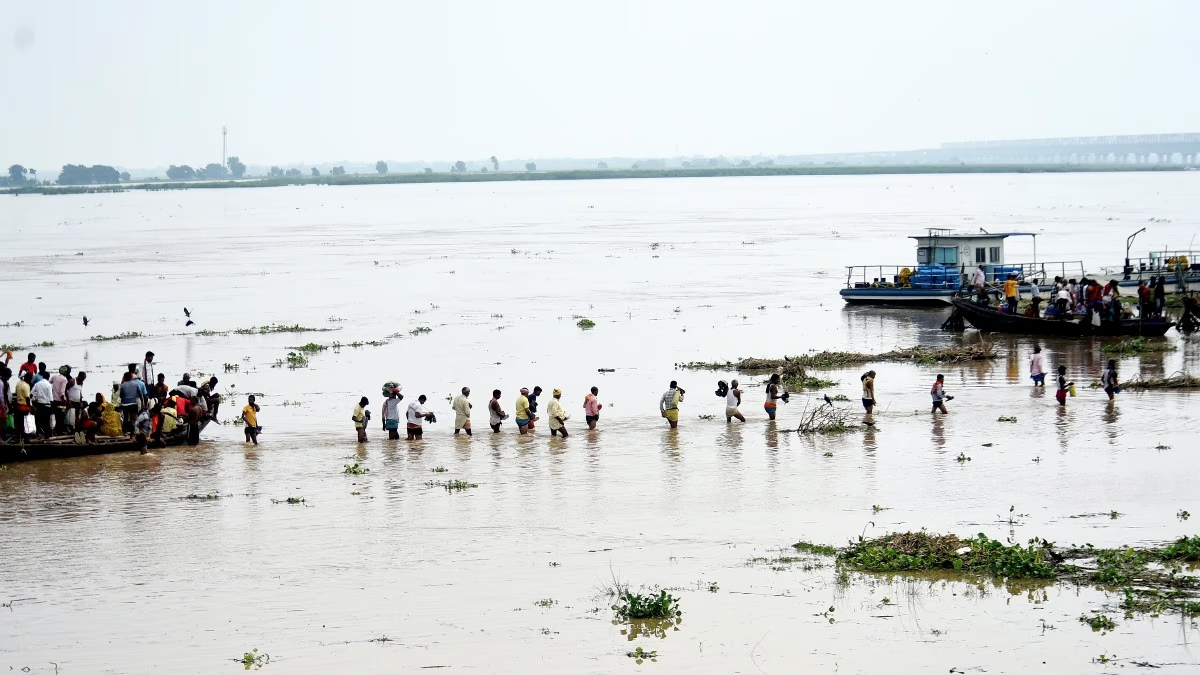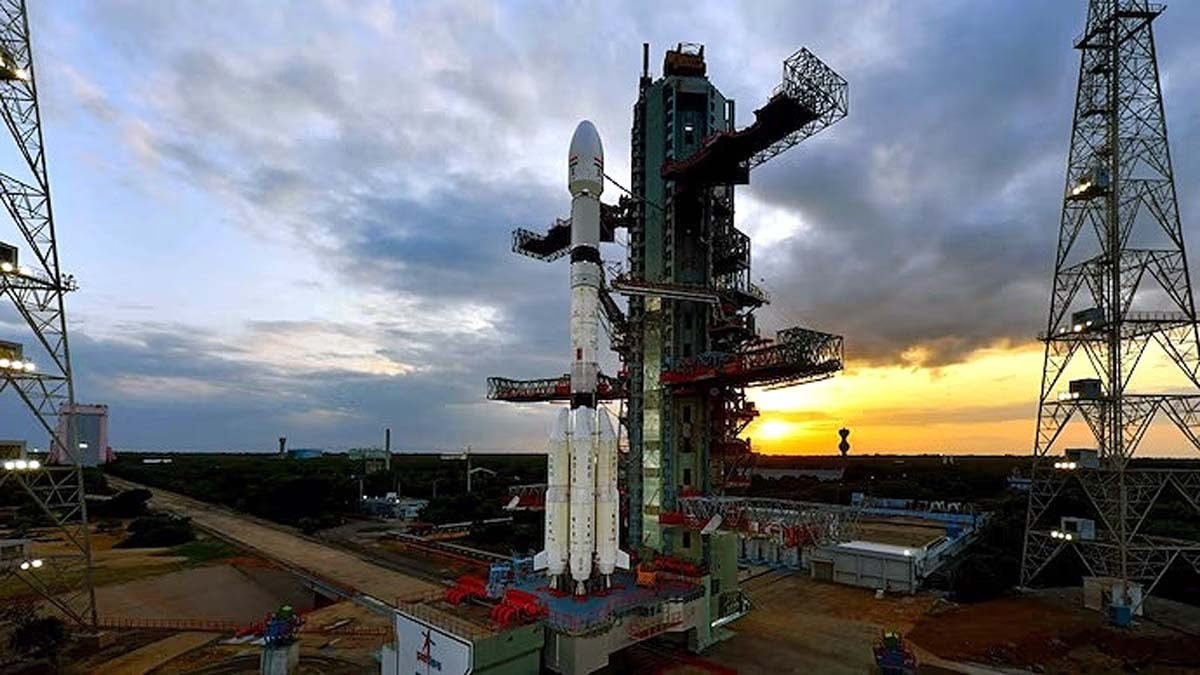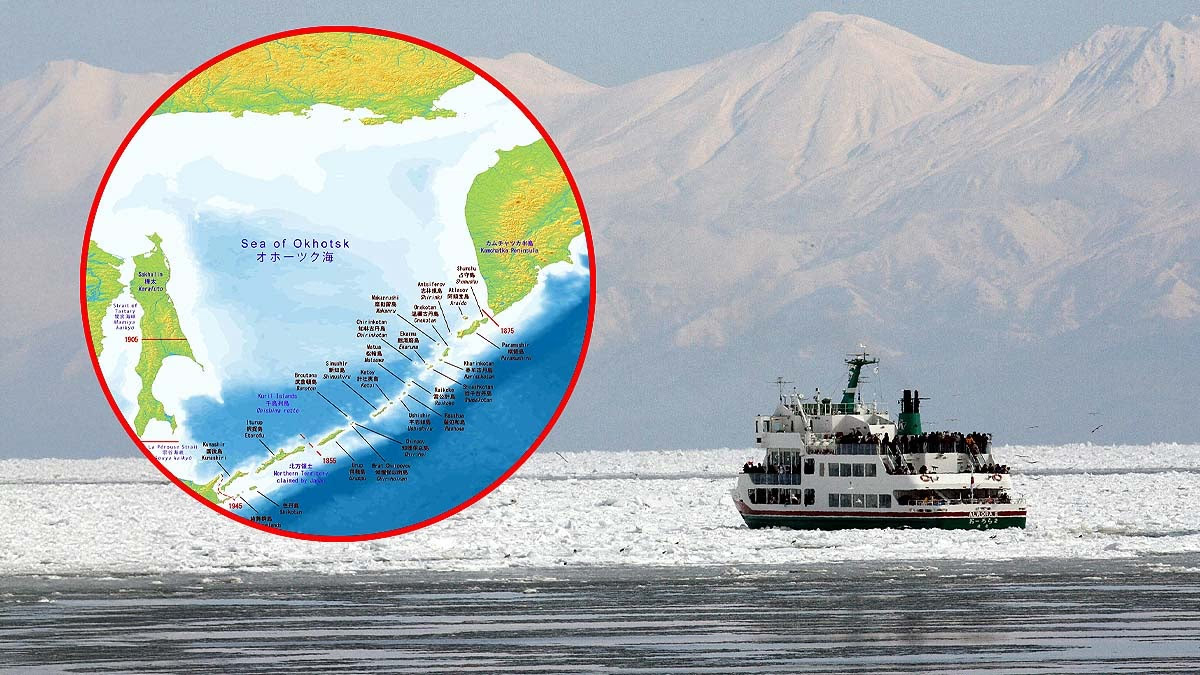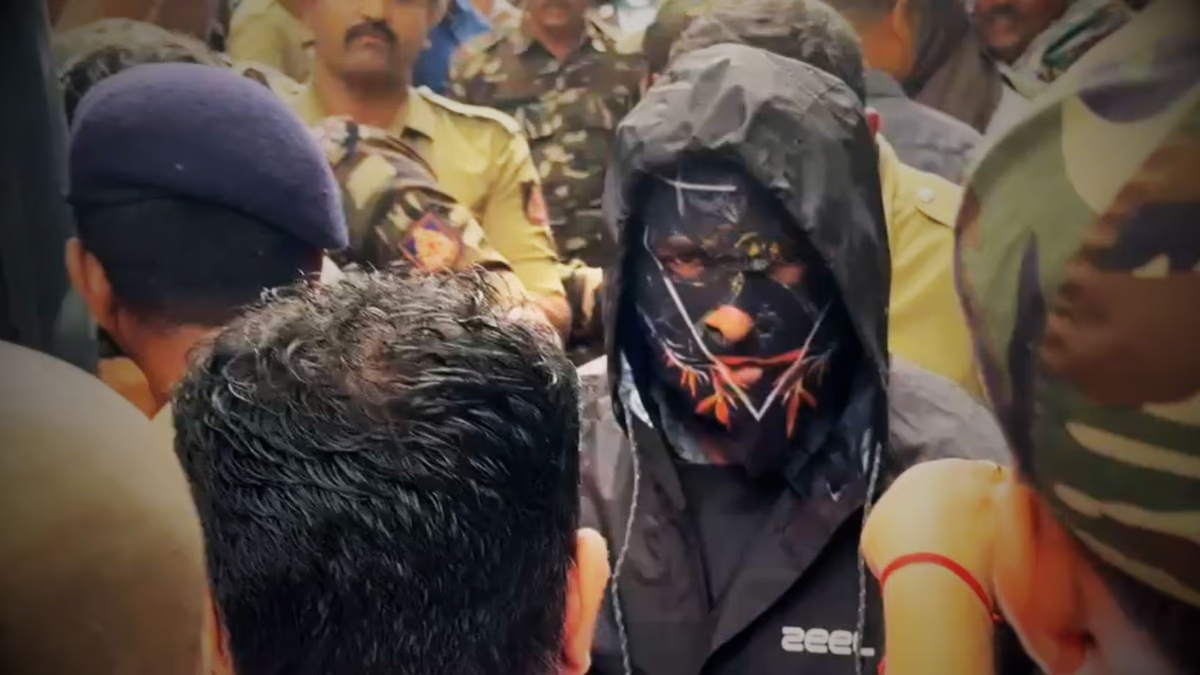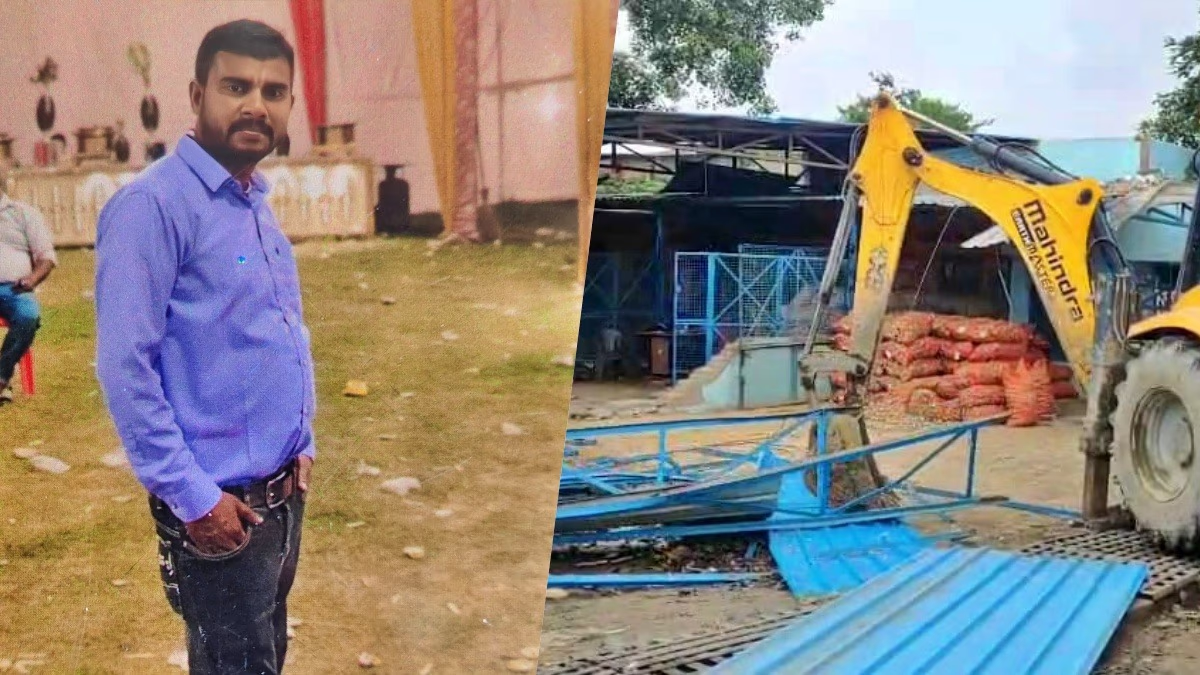Bihar is once again trapped in a crisis due to rising water levels and unprepared infrastructure. The Ganges has surpassed its danger mark, affecting more than nine districts in the state. According to the Central Water Commission, six river-monitoring stations have crossed danger levels, and nine stations have surpassed the warning threshold.
Key river stations like Buxar, Gandhi Ghat (Patna), Hathidah, and Kahalgaon (Bhagalpur) have already exceeded danger lines. Meanwhile, stations in Vaishali, Munger, Katihar among other districts remain above warning marks. Neighboring districts like Ballia in Uttar Pradesh and Sahibganj in Jharkhand are also experiencing flood-like situations due to the river's swelling.
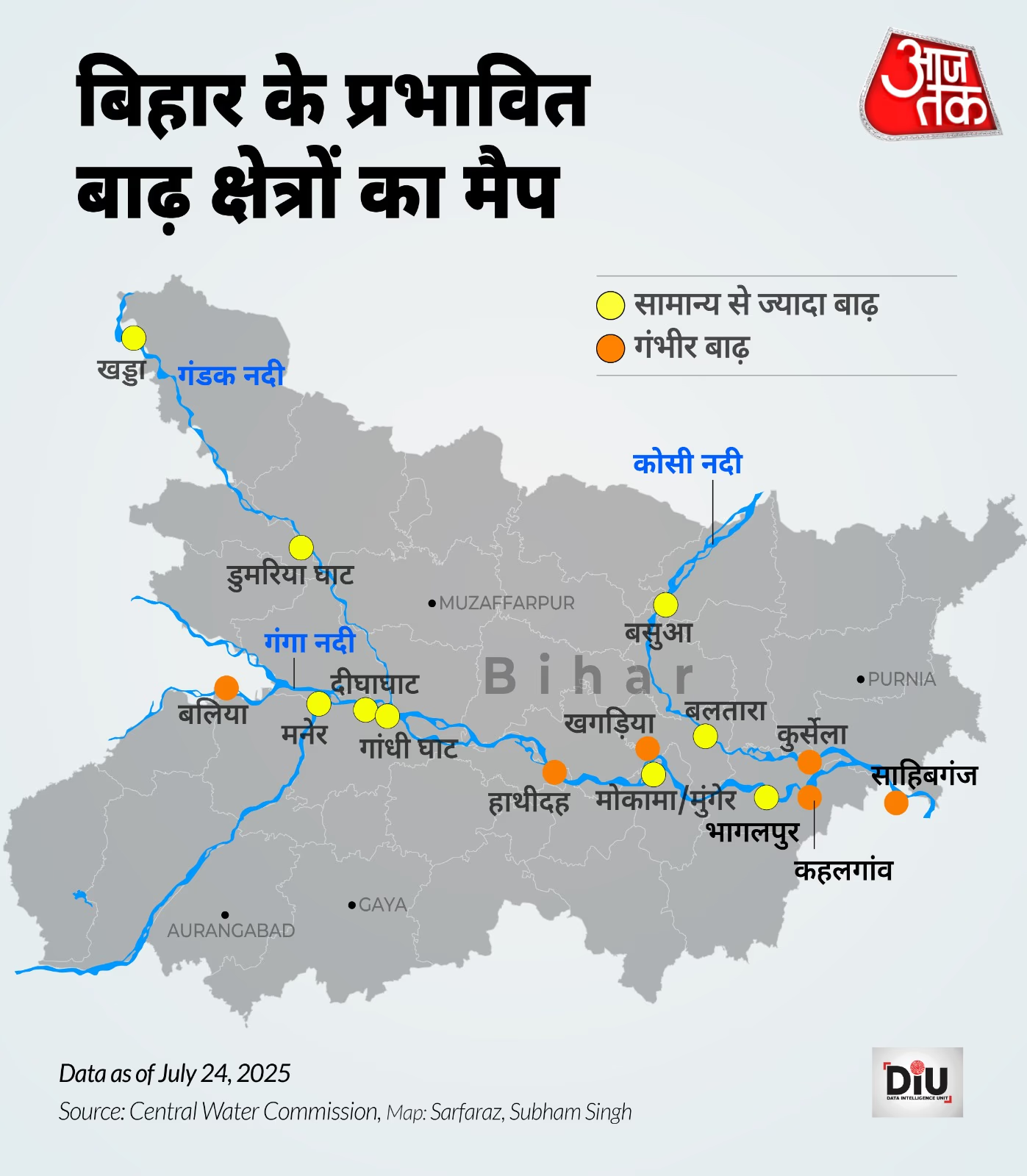
Source: aajtak
The rise in the Ganges' water levels was not abrupt. Hydrograph data from CWC shows a 50-centimeter increase in just three days at Gandhi Ghat. Similar trends were observed at Kahalgaon in Bhagalpur district, where levels rose by 30 centimeters, and at Kursela in Katihar district, with a 28-centimeter increase recorded. These trends indicate increasing flood severity.
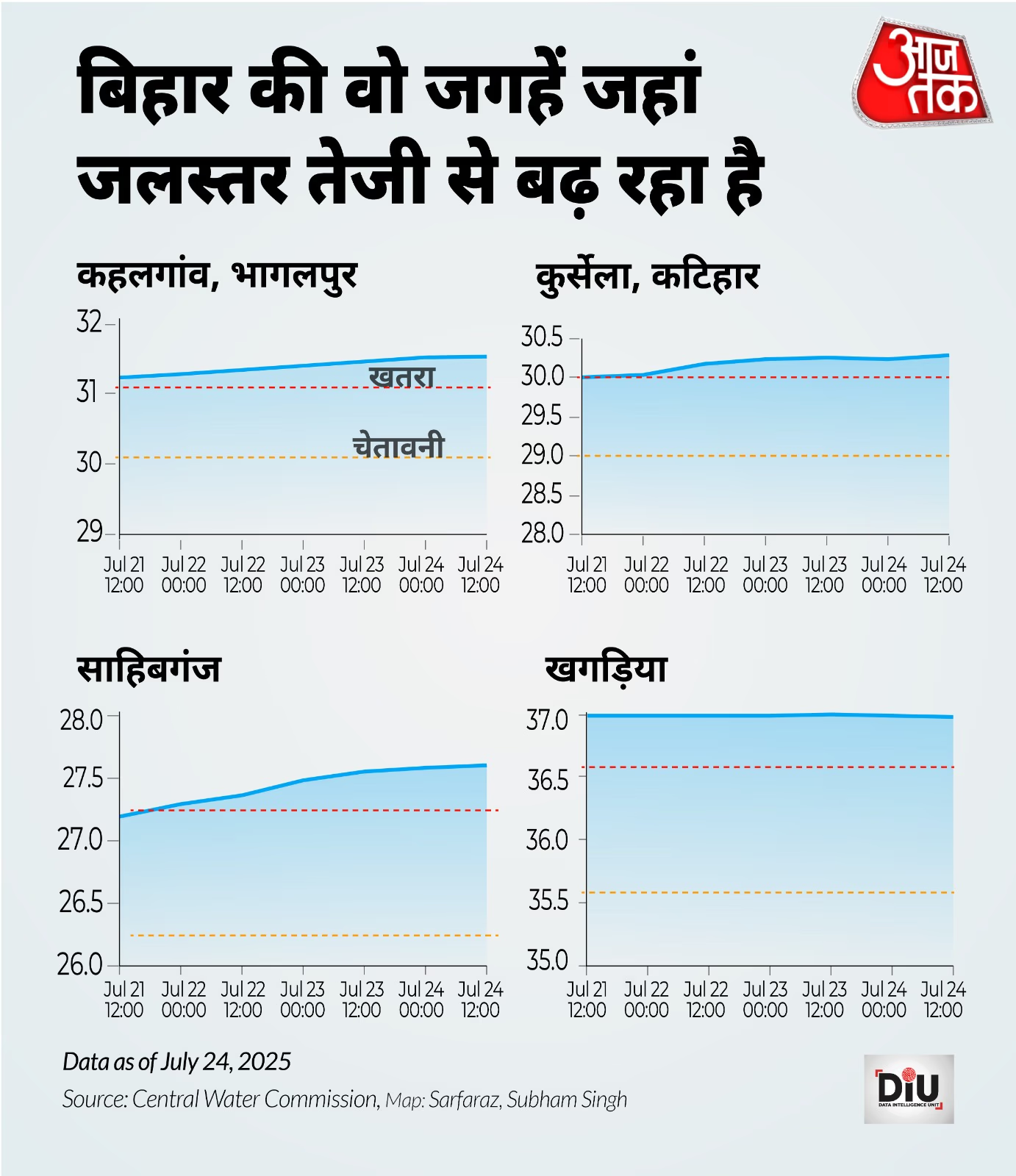
Source: aajtak
Satellite imagery highlights that approximately 15% of Patna district is engulfed by floods. The impact in Bhagalpur is slightly higher, at 15.7%, with around 6.4% of Begusarai's area submerged and 8.5% of Khagaria under floodwater currently.
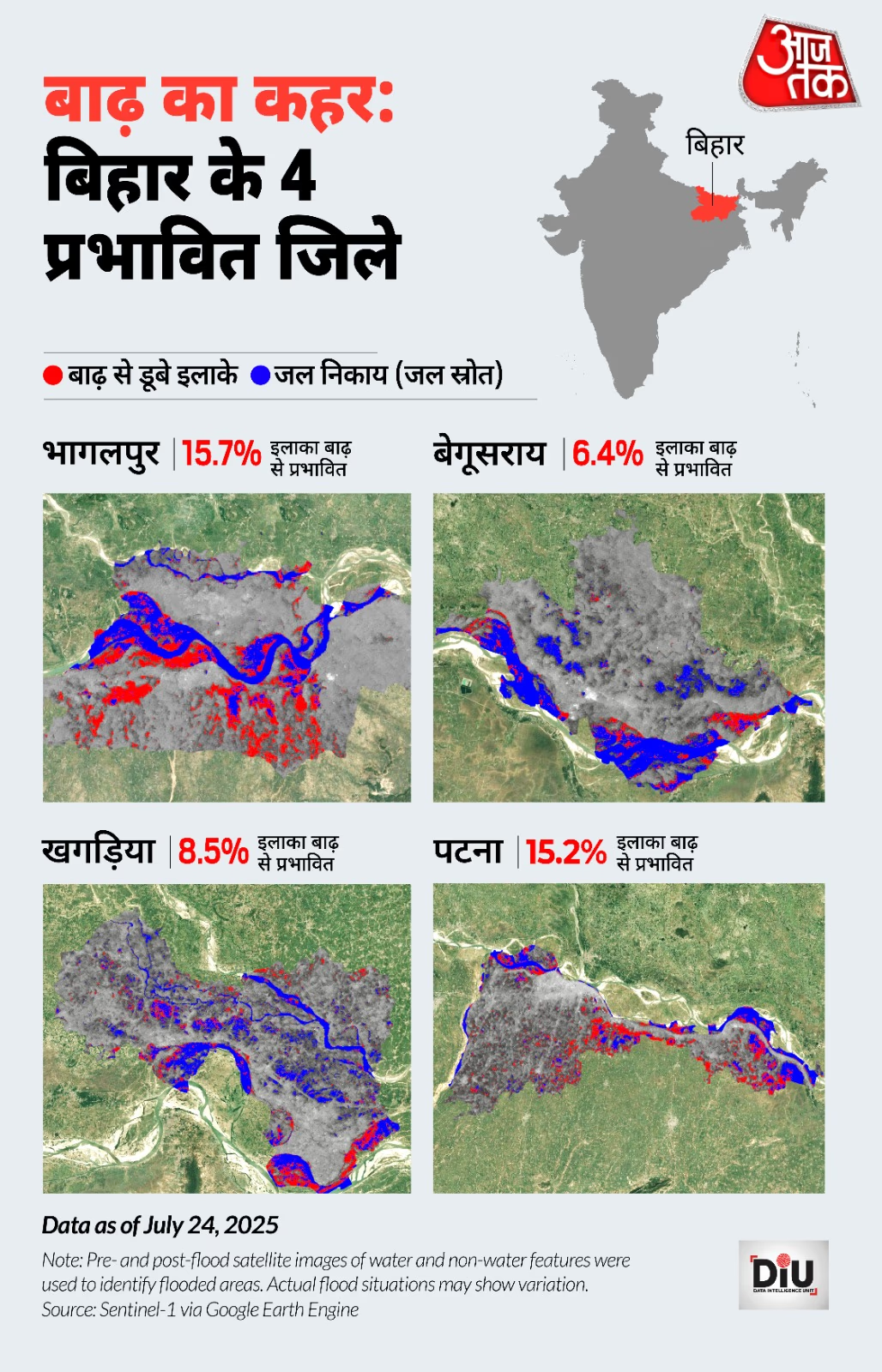
Source: aajtak
Many areas are now submerged, with roads underwater and villages flooded, disrupting daily life. Over 50 homes were swept away in the village of Javaniya, Bhojpur, post river-swelling, while in Khagaria, students have resorted to boats to reach schools. The state government has deployed water resources engineers and the State Disaster Response Force to handle the situation.
However, ongoing rains in Nepal and other upstream areas are escalating the situation, threatening further increases in water levels and worsening the flood crisis.
